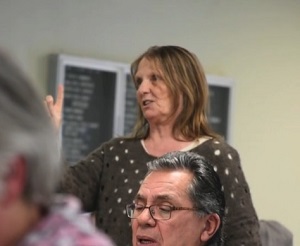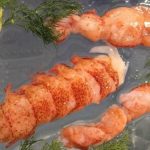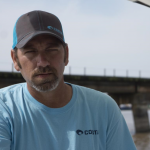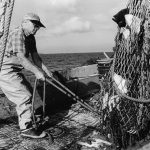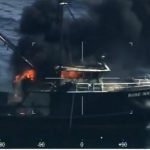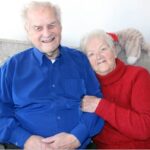Tag Archives: St. Marys Bay
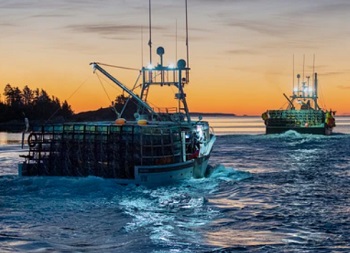
‘There’s Death Threats’: Indigenous Fishers Nervous as Nova Scotia’s Commercial Lobster Season Opens
Some Mi’kmaq have fished alongside commercial fishermen on these wharves for years but this year, after violence erupted in the past few months, they’re now divided largely by race—the white Acadian fishermen at Meteghan, and the Mi’kmaq at Saulnierville, with each flying their own flags. A court injunction, sought by the Mi’kmaq, has further separated the two groups, in an effort to prevent any more aggression and harassment towards band members on the Saulnierville wharf and on the water as they continue to fish until Dec. 17, the end of their moderate livelihood plan. The commercial inshore lobster fishery, expected to launch later this week, runs until the end of May. >click to read< 20:37
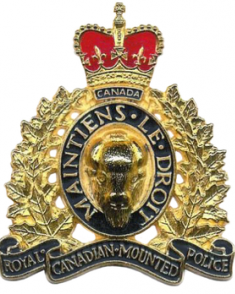
RCMP: Two charged following alleged incidents in St. Mary’s Bay during fisheries dispute
The charges were laid under the Vessel Operation Restriction Regulations for unsafe activity in St. Mary’s Bay near Saulnierville. On Nov. 26, the RCMP charged 34-year-old Brandon Alexander Maloney, of Hants County, for unsafe operation of a vessel in relation to an incident that took place Sept. 20 in St. Mary’s Bay. Maloney was a fisheries manager for Sipekne’katik at the time of the alleged incident. He has since been elected to council and no longer holds that manager position. Also charged is 26-year-old Shaquest India Miller of Yarmouth County, for unsafe operation of a vessel, relating to an Oct. 12 incident, in St. Mary’s Bay. Both are scheduled to appear in Digby Provincial Court on Feb. 15. >click to read< 17:23

Replenishment, or Misguided Retribution?! Trouble brewing ahead of start to Nova Scotia fall lobster season
The recent seizure of lobster traps in St. Marys Bay by federal officials could lead to big trouble on the water. Chief Mike Sack of the Sipekne’katik First Nation says Indigenous fishers whose traps were taken last weekend and on Wednesday will replace them by taking the traps of commercial fishers when the fall season opens Monday in southwestern Nova Scotia, a huge event known as Dumping Day. “Dumping Day is going to be about 400,000 traps that our people get to pick from to replenish our traps,” Sack said in an interview, referring to the start of Canada’s largest and most lucrative lobster fishery. >video, click to read< 08:02
 Tension could rise again on Monday in lobster dispute on east coast – The ongoing dispute between Indigenous and non-native lobster fishers could get tense once again. Last weekend, and on Wednesday, agents from Fisheries and Oceans Canada (DFO) seized hundreds of Indigenous lobster traps, ostensibly because the traps were set before the season opens on Monday.. >click to read<
Tension could rise again on Monday in lobster dispute on east coast – The ongoing dispute between Indigenous and non-native lobster fishers could get tense once again. Last weekend, and on Wednesday, agents from Fisheries and Oceans Canada (DFO) seized hundreds of Indigenous lobster traps, ostensibly because the traps were set before the season opens on Monday.. >click to read<
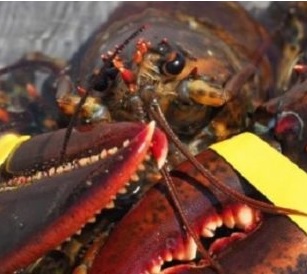
DFO officers seize 500 lobster traps in St. Marys Bay
The Department of Fisheries and Oceans says enforcement officers are going back to St. Marys Bay in southwestern Nova Scotia where they seized hundreds of lobster traps on the weekend in an area used by Mi’kmaw fishermen. Todd Somerville, DFO’s director of conservation and protection for the Maritimes, said 500 traps were seized for a variety of violations. “Untagged gear, improperly configured gear, gear that hadn’t been tended in a while. There was gear where dead lobsters were found. Over 6,000 lobsters, live lobsters, were returned,,, >click to read< 18:17

In Search of Common Ground – An interview with Arthur Bull about the lobster fishery crisis in St. Mary’s Bay
For weeks now we’ve read stories about the violence and ugly confrontations taking place on the shores of St. Mary’s Bay,, To try to make some sense of the recent turmoil, I turned to Arthur Bull, who is currently an advisor to the World Forum of Fisher Peoples. Bull has also been involved in the commercial fishing sector as Coordinator of the Fundy Fixed Gear Council, and President of the Bay of Fundy Inshore Fishermen’s Association. How do you view the conflict taking place in St. Mary’s Bay and what do you think might be the pressures and the driving forces behind it?,, There was an article by the philosopher Cornel West, and he was saying that in the current climate, you’re either a racist or you’re an anti-racist. So, on that point, and not to dwell on it, but my thinking is that there’s two things going on in St. Mary’s Bay. One is about the fisheries, and the other is about the racism,,, >click to read< 11:23

Envelope pushed in St. Marys Bay and Digby folk pushed into a corner – Susan Beaton
So now that the dust is starting to settle, righteous keyboard warriors can take a breather. So let’s try to give the people of Digby County and St. Marys Bay some consideration. Terrible things were said and done this month to the Sipekne’katik First Nation people and to those who supported them. No apologies here for the bad behaviour. But consider for a moment what it’s like for a small village, its lifeblood on the line, as a fight for treaty rights plays out on its doorstep. Sipekne’katik wanted to push to the forefront the “moderate livelihood” debate, as many bands in other areas are doing as well. This tiny bay became a focus of that effort. What happened next is a bit more dubious. By Susan Beaton, >click to read< 09:23

Chief Mike Sack: The face and voice of Mi’kmaq lobster fishing that is met with ire and violence
Monday is election day, when the Sipekne’katik band will elect a chief to lead the province’s second-largest Mi’kmaq community for the next two years. Chief Mike Sack is on his way to Digby. In his pickup, skirting along Highway 101, it is two and a half hours of picturesque driving from his band’s reserve in central Nova Scotia to communities on the province’s southwestern coast, where lobsters grow plump and delicious in St. Marys Bay. While he is well-known in his community, most in Canada only recently noticed Sack, through the news and, for a certain demographic, online memes, both heroic and horrific, sparked by alarming events as the lobster dispute turned violent. >click to read< 18:50

For Acadian fisherman, early Mi’kmaq fishery in N.S. bay can ‘never’ be respected
As he stands calmly splicing anchor rope, Roger LeBlanc describes the anxiety, anger and suspicion over a Mi’kmaq lobster fishery that is coursing through his small Acadian community. The threat perceived by LeBlanc, 61, is the launch of a lobster fishery by Sipekne’katik First Nation in September,,, In the weeks that followed, Indigenous traps were cut, a boat burned, vehicles were destroyed, and one lobster pound that handles Indigenous catch was damaged while another was burned down. The actions by groups of up to 200 people have drawn condemnation from across party lines in Parliament. >click to read< 13:40
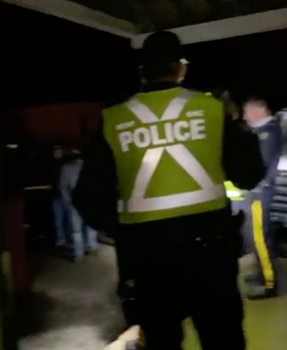
Angry mob trap Mi’kmaw fishermen at a lobster pound in southwestern Nova Scotia
An angry mob of non-Indigenous lobster fishermen trapped two Mi’kmaw fishermen inside a lobster pound in southwestern Nova Scotia late Tuesday evening. According to Jason Marr, a Mi’kmaw lobster fisherman with the Sipekne’katik First Nation, N.S., the angry crowd also set fire to his van and threw rocks at the facility’s windows in West Pubnico while he and another fisherman, Randy Sack, were trapped inside. Marr said he fled to the lobster pound in West Pubnico Tuesday evening when he heard that a mob of non-Indigenous fishermen were heading to the wharf,,, >click to read< 09:30
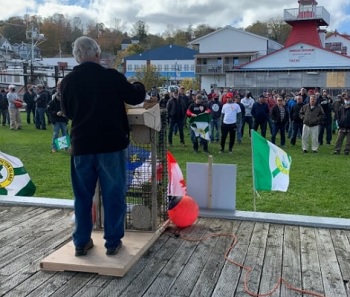
Commercial fishermen rally in Digby, Ex-fisheries minister calls for pause on out of season fishing and protests
Several hundred commercial fishermen held a rally Tuesday in Digby, N.S., as tensions continued to simmer over expanded Mi’kmaw lobster fishing in the area. There were calls for a pause on all out-of-season fishing by First Nations and an audit of commercial licences awarded to bands following the 1999 Marshall decision that recognized their right to fish for a moderate livelihood. Afterward, some fishermen gathered outside a lobster facility in New Edinburgh suspected of buying lobster harvested by Mi’kmaq fishermen when the season is closed. There was an RCMP presence at the rally, which was held on the eve of the Wednesday opening of commercial fishing in Lobster Fishing Area 35 in the Bay of Fundy. >click to read< 22:03

Trudeau government rejects lobster quota system for commercial inshore fleet
Fisheries and Oceans Minister Bernadette Jordan issued a statement Friday after meeting with commercial fishermen the day before. “As confirmed in that meeting, there is no plan to move to a quota system for the commercial lobster fishery and it is not being considered,” Jordan said. For decades, conservation in the billion-dollar commercial lobster fishery has been maintained by limiting the number of licence holders and traps. Stocks throughout Nova Scotia lobster fishing areas are healthy. Three Mikmaw parliamentarians have proposed the creation of an optional Atlantic First Nations fisheries authority to administer an Indigenous fishery. >click to read< 19:13
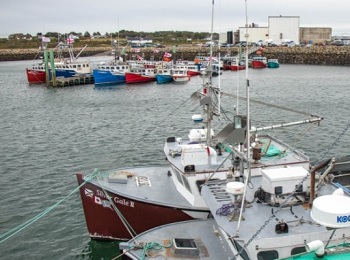
The lobster catch in St. Marys Bay is down, but there’s little consensus on why
DFO has released data showing a decrease in the amount of lobster caught between 2016 and 2018 in St. Marys Bay, the body of water at the centre of a disputed Mi’kmaw fishery in southwest Nova Scotia. Lobster landings in St. Marys Bay were 1,691 metric tonnes in the 2016-2017 season with a record high value of $25 million, according to data released to CBC News by the department. Two years later, landings were down 46 per cent by weight and 32 per cent by value. >click to read< 08:19

The historic ups and downs of the Acadian-Mi’kmaq relationship
Mi’kmaq fishermen, emboldened by a decades-old Supreme Court of Canada ruling affirming their treaty right to hunt, fish and gather in pursuit of a moderate livelihood, spent another day trying to drop their lobster traps in the waters there. Pitted against them were non-indigenous fishers who claim that the natives are threatening the local lobster fishery’s sustainability, and who have been making their point by cutting First Nation traps, and trying to pressure buyers not to purchase their harvest. Once again, the federal government stood mutely by, unwilling to clarify the question of what constitutes a “moderate livelihood” fishery, and then, by omission, further fuelling a situation that looks like it could turn violent at any moment. It sounds, therefore, strangely like the scene I encountered 21 years ago in Burnt Church, N.B. >click to read< 17:38
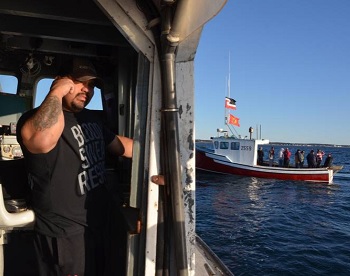
Federal inaction drives lobster feud
A Coast Guard cutter and two helicopters (one RCMP, one DFO) provided little more than backdrop scenery to the boiling tensions on the Acadian shore Monday. Both the First Nations encamped behind a barricade at the Saulnierville Wharf and the predominantly Acadian local fishermen with their own roadblock at the Meteghan wharf 14 kilometres away called on the federal authorities to uphold the law. But whose law do they uphold? Successive federal fisheries ministers have kicked the issue down the election cycle by providing commercial licenses to First Nations bands without negotiating the Supreme Court of Canada acknowledged right of individual Mi’kmaq to make a moderate livelihood off of natural resources. The vacuum left by their inaction is being filled with threats, flares and rubber bullets. >click to read< 10:29

Nova Scotia Mi’kmaw lobster harvester to file an injunction against DFO for seizing traps
“I’m going to get (my lawyer) to file an injunction on my behalf preventing the DFO from violating my rights until they get this moderate livelihood stuff settled,” Matthew Cope, 34, said. Cope, who is from the Millbrook First Nation, said he left the wharf in Digby, N.S. on Aug. 29 to check on his lobster traps when he saw DFO officers aboard the Canadian Coast Guard Vessel, The Earl Grey, seizing 60 of his traps. “We had ten trawls of fifteen each. They took six of them. We caught them in the middle of taking our trawls so I stood up beside them and I said, ‘What are you guys doing?’” Cope explained. “I have a pre-existing inherited treaty right for fishing and I have a right to do so unhindered,” he said. >click to read< 21:46

Fish farms not worth damage they’ll do
I have lived in Tiverton my whole life. I am a lobster fisher. I am very concerned about the effect that fish pens proposed by Cermaq will have on St. Mary’s Bay. I have environmental, economic and community concerns. I have been told approximately 25 acres of prime lobster bottom is being taken away from us by each of these salmon pens. We don’t have a groundfish fishery anymore. Lobsters are what sustain our way of life. These pens are proposed to go where I have always caught the majority of my lobster, and that could displace me from my job, by Sheldon Dixon, >click to read< 11:10
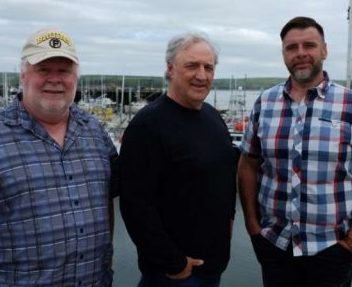
N.S. Fishermen call on government officials to crack down on lobster poaching
Bernie Berry glances across the wharf in Digby, N.S., as several fishing boats stop alongside for crews to offload their catch. As the season for this lobster fishing area — one of the most lucrative in Canada — prepares to close on the last day of May, it’s bringing with it a flurry of activity. Berry and others here hope the hustle and bustle of fishing isn’t replaced with negative activity come June 1. “Everyone knows what’s going on,” he said. “This kind of stuff has been going on for years.” >click to read<
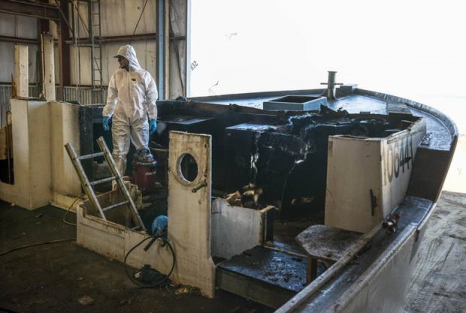
Lobster wars
Burned out fishing boats, thousands of pounds of dumped, dead lobsters and allegations of a booming black market for the popular crustacean have drawn federal investigators to Nova Scotia’s most lucrative fishing grounds in the lead-up to lobster season. Tensions have been running high in recent weeks along the small wharves in the communities that dot St. Mary’s Bay, a well-known breeding ground for lobsters during the summer. While conservation laws prevent lobster fishers from harvesting the shellfish during breeding season in order to safeguard stocks, stunned locals watched thousands of pounds of lobsters that appeared to be commercial loads pass over their docks though the summer months. click here to read the story 10:53
The Donald Marshall decision and Digby’s lobster wars
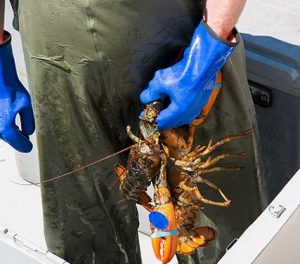 A debate over illegal fishing has reached a boiling point in southwest Nova Scotia. Amidst accusations from non-Indigenous fishers about black market lobster sales, the Assembly of Nova Scotia Mi’kmaq Chiefs is calling on the Department of Fisheries and Oceans to finally clarify the policy surrounding a legal case nearly 20 years old. Mi’kmaw fishers working in St. Mary’s Bay have been facing vocal outcry this season from non-Indigenous fishers in and around the Digby wharves. click here to read the story 08:40
A debate over illegal fishing has reached a boiling point in southwest Nova Scotia. Amidst accusations from non-Indigenous fishers about black market lobster sales, the Assembly of Nova Scotia Mi’kmaq Chiefs is calling on the Department of Fisheries and Oceans to finally clarify the policy surrounding a legal case nearly 20 years old. Mi’kmaw fishers working in St. Mary’s Bay have been facing vocal outcry this season from non-Indigenous fishers in and around the Digby wharves. click here to read the story 08:40
Why one Mi’kmaq fisherman says commercial fishing licences aren’t working – click here 16:11
A ‘Confluence of events’ may have caused mysterious fish kill off Nova Scotia
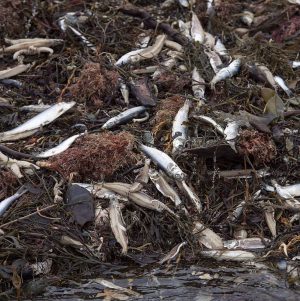 A federal scientist says the recent high-profile fish kill off southwestern Nova Scotia may have been caused by a “confluence of events,” including fish behaviour, weather, and various ecological factors such as predators. However, Alain Vezina says it’s still not known what caused thousands of herring and shellfish to wash ashore at several points between late November and through December. Vezina, who is regional director of science for the Department of Fisheries and Oceans (DFO), says causes such as pollution, pesticides, and naturally occurring toxins have been ruled out. He says overall the kill was a “small and localized event” that occurred over a 100 kilometre swath from St. Marys Bay to Tusket. Read more here 14:47
A federal scientist says the recent high-profile fish kill off southwestern Nova Scotia may have been caused by a “confluence of events,” including fish behaviour, weather, and various ecological factors such as predators. However, Alain Vezina says it’s still not known what caused thousands of herring and shellfish to wash ashore at several points between late November and through December. Vezina, who is regional director of science for the Department of Fisheries and Oceans (DFO), says causes such as pollution, pesticides, and naturally occurring toxins have been ruled out. He says overall the kill was a “small and localized event” that occurred over a 100 kilometre swath from St. Marys Bay to Tusket. Read more here 14:47
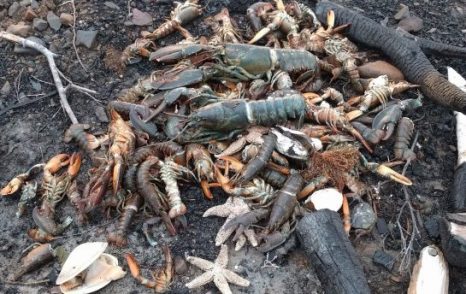
DFO says nothing out of the ordinary with the environment where sea creatures washed up dead
The distressing amount of sea life and diversity of species found dead on some beaches along the Bay of Fundy over the past few weeks has been puzzling. So far, tests haven’t revealed what’s killing the sea life. Federal scientists went out on the water Thursday to examine the physical environment, taking water samples, testing dissolved oxygen, salinity and temperature — all of which were normal. They also scanned images of the bottom of St. Marys Bay off the Bay of Fundy. The video showed normal conditions with no masses of dead organisms that one would expect if the cause was an ongoing environmental problem. “We have ruled out the usual suspects,” said Kent Smedbol, manager of population ecology for DFO. Read the story here 15:31

Scientists test water to narrow down what’s killing herring, sea creatures at St. Marys Bay
Federal scientists are testing water samples and scanning images of the bottom of St. Marys Bay, hoping to determine what caused thousands of herring and sea creatures to wash ashore near Digby, N.S. Staff aboard a vessel gathered samples Thursday and used an underwater camera to film and photograph the ocean floor. Kent Smedbol, manager of population ecology for the Department of Fisheries and Oceans (DFO) in the Maritimes, said the data will be examined to try to figure out whether an environmental factor caused the fish to die. “It could be an intrusion of very cold water very rapidly, it could be related to a rapid change in salinity with the storms that have gone through … due to the sudden influx of fresh water, rain or runoff from the land,” he said. “Depending on what we find, then hopefully that will allow us to discount a number of possibilities and focus our efforts on some possible explanations.” Read the story here 08:55
Dead lobsters, crabs and herring are washing up along this Nova Scotia shore, and we don’t know why!
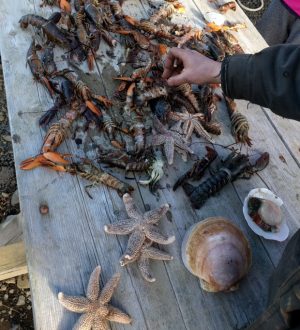 Halifax resident Eric Hewey was home in Digby, N.S., visiting for the holidays when he got a call from friends on Boxing Day summoning him to the beach below Savary Park in nearby Plympton. “They said we’ve got to come down and look at the beach.” On Tuesday Hewey described when he found when he arrived at the beach as sad: lots of dead herring — an ongoing and as yet unexplained problem — but also dead starfish, lobsters, bar clams, scallops and crabs. Ted Leighton is a retired veterinary pathologist who has been tracking the dead herring reports. He hadn’t been to the beach to see the most recent findings, but he’s seen Hewey’s pictures and noted it’s a place dead herring have been found before. More photos, read the rest here 13:09
Halifax resident Eric Hewey was home in Digby, N.S., visiting for the holidays when he got a call from friends on Boxing Day summoning him to the beach below Savary Park in nearby Plympton. “They said we’ve got to come down and look at the beach.” On Tuesday Hewey described when he found when he arrived at the beach as sad: lots of dead herring — an ongoing and as yet unexplained problem — but also dead starfish, lobsters, bar clams, scallops and crabs. Ted Leighton is a retired veterinary pathologist who has been tracking the dead herring reports. He hadn’t been to the beach to see the most recent findings, but he’s seen Hewey’s pictures and noted it’s a place dead herring have been found before. More photos, read the rest here 13:09
Rainbow coloured lobster caught by Nova Scotia fisherman
 Fishermen off the coast of Nova Scotia have been hauling up strange-coloured lobsters for years, but a rainbow lobster caught just before Christmas may top them all. It was caught on Dec. 19 by Captain Chad Graham on the Chad & Sisters Two, sailing out of Westport, Brier Island. Graham’s sister, Amanda Graham, says he pulled the multi-coloured crustacean out of the water at the mouth of St. Marys Bay. “He has caught all blue and yellow lobsters before, but this one was the most purple — with blues, yellow, and white — that’s he’s ever caught or seen,” she said. Read the rest here 08:14
Fishermen off the coast of Nova Scotia have been hauling up strange-coloured lobsters for years, but a rainbow lobster caught just before Christmas may top them all. It was caught on Dec. 19 by Captain Chad Graham on the Chad & Sisters Two, sailing out of Westport, Brier Island. Graham’s sister, Amanda Graham, says he pulled the multi-coloured crustacean out of the water at the mouth of St. Marys Bay. “He has caught all blue and yellow lobsters before, but this one was the most purple — with blues, yellow, and white — that’s he’s ever caught or seen,” she said. Read the rest here 08:14
Who ya gonna call? Digby DFO cleans up ghost traps from Bay of Fundy
 “Our mandate is enforcement and conservation,” said Digby Fisheries officer Corey Webster. “Just like our compliance blitz in St. Mary’s Bay this summer, this is an important job just to make sure everything is cleaned up. And it’s also important for us to be out on the water, just to see what is happening out there.” Fishermen harvest lobster from weighted traps that sit on bottom. They tie a rope to the trap and a buoy keeps that rope floating at the surface to show them where their traps are. Other fishermen, who may see these errant traps, are not allowed however to haul another fisherman’s traps. Read the rest here 15:22
“Our mandate is enforcement and conservation,” said Digby Fisheries officer Corey Webster. “Just like our compliance blitz in St. Mary’s Bay this summer, this is an important job just to make sure everything is cleaned up. And it’s also important for us to be out on the water, just to see what is happening out there.” Fishermen harvest lobster from weighted traps that sit on bottom. They tie a rope to the trap and a buoy keeps that rope floating at the surface to show them where their traps are. Other fishermen, who may see these errant traps, are not allowed however to haul another fisherman’s traps. Read the rest here 15:22
Cooke Aquaculture says vandals cut fish pens loose in St. Marys Bay
 Nova Scotia RCMP are investigating a vandalism complaint filed by New Brunswick-based Cooke Aquaculture after the company says vandals cut loose some of its fish pens. Nell Halse, a spokeswoman for Cooke Aquaculture, says the company received reports from the Joint Rescue Co-ordination Centre on Thursday that a salmon pen was floating free from a fallow salmon farm in St. Marys Bay, near Digby. Our guys have been out there last night and have brought it back to the site and resecured it,” said Halse. “It was clearly cut away from the site.” Read the rest here 16:12
Nova Scotia RCMP are investigating a vandalism complaint filed by New Brunswick-based Cooke Aquaculture after the company says vandals cut loose some of its fish pens. Nell Halse, a spokeswoman for Cooke Aquaculture, says the company received reports from the Joint Rescue Co-ordination Centre on Thursday that a salmon pen was floating free from a fallow salmon farm in St. Marys Bay, near Digby. Our guys have been out there last night and have brought it back to the site and resecured it,” said Halse. “It was clearly cut away from the site.” Read the rest here 16:12






